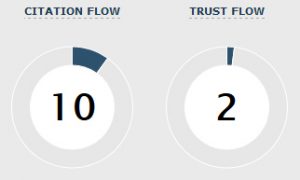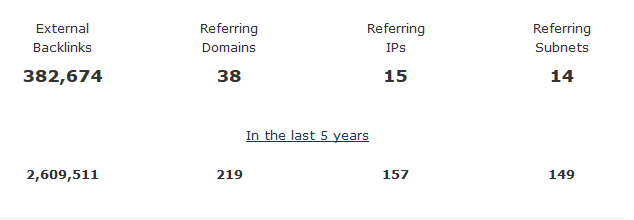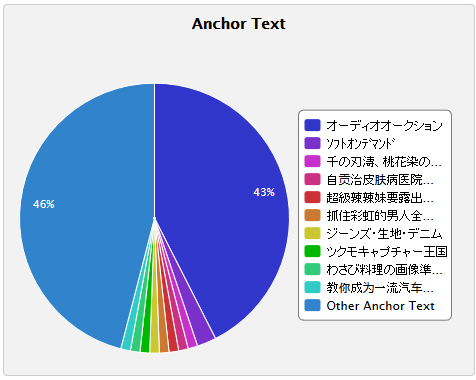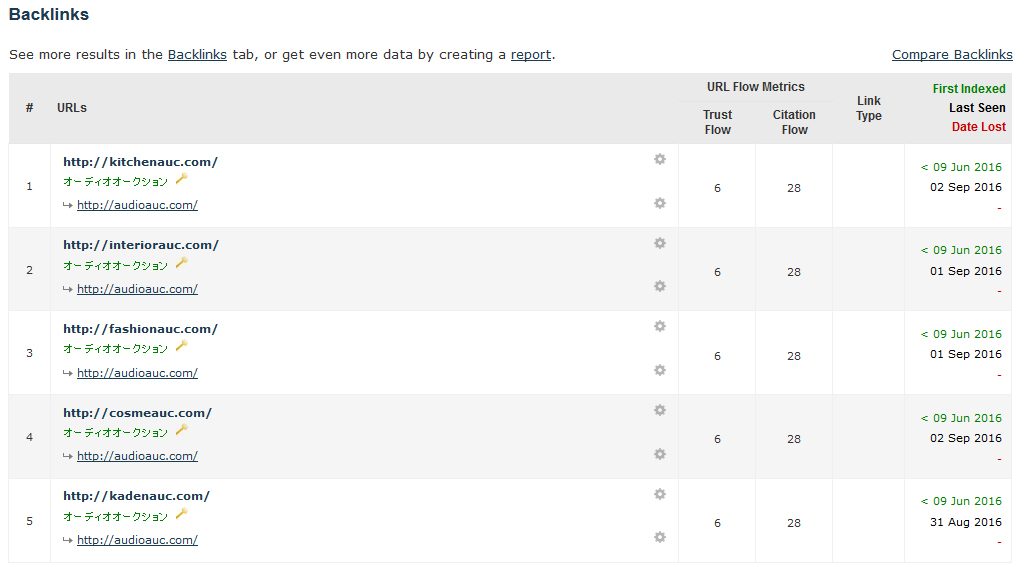Expired domains are great ways to capitalize on the efforts of someone else without having to spend a lot of effort or time on your own to reap the benefits.  In the past, I’ve talked about how to use expired domains for SEO. Whether you’re looking to filter an expired domain into your own private blog network or are looking to develop it into one of your own primary “money” sites, there are huge benefits from how to find expired domains with traffic.
In the past, I’ve talked about how to use expired domains for SEO. Whether you’re looking to filter an expired domain into your own private blog network or are looking to develop it into one of your own primary “money” sites, there are huge benefits from how to find expired domains with traffic.
The only problem is that many webmasters are just looking to make a profit, and many of them will misrepresent the value of a site in order to attract a buyer like yourself. Buying an expired domain which was once used as a spam swamp should not be on your list of priorities. That said, it can be difficult to identify a spammy or once spammy domain when unsavory webmasters are using the most up to date methods to cover their tracks.
Therefore, in this article I’m going to share my 10 point checklist on how to spam check expired domains.
How to Spam Check Expired Domains
1 – Citation Flow/Trust Flow
I generally begin my spam check of expired domains here. I recently talked about citation flow vs. trust flow and the major difference between the two. These are trustworthy inbound link related metrics which have unofficially taken the place of page rank when appraising a website which are practically impossible to fake unlike PR which can be faked. You can get this information for free with an account from Majestic (it’s their metrics).
Citation flow is a score a site receives relative to the number of different websites linking to it. The more websites, the higher the citation flow. If the domain you’re looking at had thousands of links but they were all coming from the same handful of websites, that’s a sign of spam or at the very least an unimpressive website. Good websites receive links from many other sites because their content warrants it, so keep that in mind.
Trust flow is a score a site receives relative to the trustworthiness and authority of the sites which link to it. A spammy site is easy to spot using Majestic’s trust flow because it has a zero or near zero trust flow number. An even more obvious indicator is when the citation flow vastly outnumbers the trust flow by 2 to 1 or more. The above image demonstrates one such website I checked. As you can see, it has a 10 to 2 or simplified, a 5 to 1 ratio between citation flow and trust flow. From this ratio we can assume this is the kind of site which is receiving thousands of links from irrelevant and spammy sites and is not worth our time.
2 – Links Coming From Same Few Domains
A 5 to 1 ratio could also indicate that there may be a lot of links but they’re all coming form the same handful of domains.
The rest of their link profile overview confirms as much:
Doing a bit of ballpark math with that many external backlinks to referring domains, we see that it’s roughly a ratio of 12500 to 1. You’d be right in thinking that it would be in your best interest to not touch that domain with a digital 10 foot pole.
Nearly half of the domains were hosted on the same IPs, as well.
You can also see that they’ve lost a considerable amount of links at some point over the last five years as it’s likely evidence of search engines getting wiser and more adept at identifying spammy links.
It wouldn’t be surprising in this case if that Google penalized most of the sites in this network, disavowed links, or de-indexed sites altogether.
Let’s expound on the dangers of having the majority of your links coming from the same handful of domains.
You can find a website which has a fraction of the number of backlinks this site has and they may even be of higher quality. You still don’t want the majority of your link juice coming from one or two domains as if one of them disappears then you’ll quickly find the effects of that juice dry up with the link.
If you’re still deadset on pursuing that site, check and make sure the sites linking to it are still up. In this examples case, many of the top linking to sites had disappeared (more information on why this happened later).
Link diversity, just like traffic diversity, is key to your success, and it’s as true when appraising a domain to buy as it is any other time.
2.5 – Cross Reference Backlink Profiles With Moz, Ahrefs, and Scrapebox
Generally a link profile like this has already told us everything we need to know. But if you had a more attractive profile with a lot more referring domains but were still on the fence at this point in the process, then I recommend you exercise your due diligence and a step further and plug the same URL into Moz, Ahrefs, or Scrapebox.
or Scrapebox.
Moz’s domain authority and page authority metrics, for example (pictured right), are also useful in getting some insight about the domain we’re looking at.
While we can see that the site has decent marks in DA and PA according to Moz, the ratio of linked from domains to links given is still consistent with Majestic in that it’s way off.
Plugging in your URL to another link profile service could give you a decidedly different profile picture than another, so it’s good to get a more complete idea of the kind of site you’re looking at with more references.
3 – Anchor Text
Anchor text is an easy way to spam check expired domains. Another bit of information which Majestic will give you is the anchor test which was used to link to that site. Let’s keep with the same spammy example site we’ve been working with and take a look at their anchor text profile breakdown.
Let’s keep with the same spammy example site we’ve been working with and take a look at their anchor text profile breakdown.
Spammy anchor text doesn’t always show up as “viagra”, “porn”, or other keywords of the like. A foreign language site like this one is another one to avoid as many of the links it will be receiving still are likely from international sites with other languages. Remember that if it’s not relative to your site (and remember everything that that entails) then it’s not a good pick up.
In this case, using Google translator we can see that the one keyword which makes up the majority of the anchor text profile for this site at 43% is “audio auction”. This is an audio auction site so that makes sense.
At the same time, exact anchor text is another sign of a spammy site, and the fact that nearly half of the links pointing to this site use that anchor text, meaning nearly 200,000 links (mostly coming from the same handful of sites) say audio auction and are pointing to this site.
I’m going to take this moment to admit that I’m working with a very obvious example with this domain. Even a newbie looking to purchase their first expired domain would know something was off here, but these tips are still relevant to any site you’re appraising.
Remember when looking at an anchor text profile, avoid:
- Spammy Words
- Foreign Characters/Words
- Text Which Is Unrelated to the Site
- Too Many Exact Match keywords
4 – Deleted Links
Majestic also shows deleted links for a site. Generally a website doesn’t lose many links, even over the course of a few years. That indicates that a webmaster went back and physically removed a link from a site which is unlikely even if they’re going back and performing a web content audit of their own site.
If a link goes missing in the case of this domain, we can assume that it’s because many of the websites in that network were deindexed by Google or, through that process, the webmasters let the websites disappear without renewal because of the penalties and the fact that they had been spammed to death (almost literally).
In any event, in working to spam check expired domains, if a website is hemorrhaging links like this one over the last few years, it’s another clear indication that something sinister is going on.
At the very least it’s an indication to you that it’s not a site worthy of hanging on to links and therefore has been damaged in the eyes of Google, so even the effects of your rehabilitation efforts if you bought it will be stunted.
5 – Link Networks
If you’ve felt like this example has been leading up to something, you’d be right. Just looking at a few of the backlinks themselves confirms that this site was part of a very overt and unimaginative link network where the exact match keyword in the domain name changed but the suffix of “auc” for auction remained consistent across every site of the network:
The same anchor text of “audio auction” was used from every one of these sites to point to the domain we’ve been talking about this whole time.
These are all quintessential examples of cookie cutter sites which scream footprint (see what are footprints in SEO) and even all have the exact same trust flow and citation flow numbers.
To be honest this kind of linking profile makes me angry as an SEOer.
It’s the kind of dinosaur blog network (the opposite of a private blog network) which you could have gotten away with in 2004. But if you’re trying this over a decade later, you get what’s coming to you, and it’s clear that they have.
If I have to say then here it is: don’t buy expired or auctioned domains which get their relevance from blog networks.
If the network were any good, they wouldn’t be selling in the first place. More often than not a sucker will buy a website which has its impressive trust and citation metrics from a network. Then of course after the sale goes through, the seller removes all of the links to that domain and brings another site into the fold to lure in another poor sap.
6 – Check the Internet Archive’s Way Back Machine
Sometimes visual proof is the most compelling when you need to spam check expired domains. Go to http://archive.org/web/ and plug your domain into the search field. This will show you snapshots of the website over the years so that you can determine how it has been used.
Was it used to redirect to other sites, did it ever look hacked or a home for porn or spam? Sites with thin content and lots of ads on them are dead giveaways for former spam lands.
Ideally you want to see that it was a content site which had all the Google fluff and pages and articles with content relevant to the theme of the site and without too many links pointing away from it and if it does, that those links are to relevant sites and not just another piece of a spam puzzle.
7 – The Older, the Better
Like fine wines, domains tend to get better with age. They acquire more trust from Google and other search engines the older they get. That said, scammers have found ways to fake the apparent age of a domain to make it appear older than it is.
You can verify the approximate age of a domain by cross referencing the creation date you get when you plug the domain into https://www.whois.net/ with The Way Back Machine’s first snapshot. Ideally they’ll be within a few months of one another so that you can get a very solid idea of the age of the domain you’re dealing with.
8 – Check to See if It’s Indexed in Google
Doing a search of site:domain.com (replacing domain with your domain name) in Google to see if it returns zero results honestly isn’t the most reliable way to check if a site is spammy and therefore deindexed in Google. If the site has been expired for a length of time, then there’s nothing for Google to index, ergo there will be no results.
Some misled marketers may mistake this as a site which has been spammed out of Google’s index, which is good news for you to take advantage of their shortsightedness.
That said, if it’s a site which literally just expired and you know that for a fact, yet it’s showing no results, then you may want to revisit the previous points of this article if you thought everything checked out so far.
One more note on checking a site on Google. If it’s still indexed, check the title and meta description to ensure that it doesn’t contain any egregious keyword stuffing or spamming.
9 – Check for An Adsense Ban
A dead giveaway that a site was used for spamming purposes, especially in the eyes of the all important Google, is to check for an Adsense ban. Plug in your URL at http://ctrlq.org/sandbox/. Pick your country and check it; if the ad space appears then you’re fine. If it was banned, it will tell you.
In this site’s case, we might also check its sandbox status in Japan as the linked to text was predominantly Japanese.
10 – Check for a Manual Penalty Post Purchase
Unfortunately even if you’ve done everything else to spam check expired domains you’re looking it, there’s no 100% guaranteed way to check to see if a site has been penalized if its already expired and you don’t own it. The above tips will get you there 99 times out of 100 to spam check expired domains beyond all certainty.
But for that 1 time out of 100, after you’ve bought the domain, set up a Google Search Console account for that domain and verify that you own it by adding the bit of code they supply you to your new site.
If the site was blacklisted for violating from Google’s rules on spam in the past, you may be notified that the site is carrying a penalty in which case you should submit a reconsideration request with “Newly Acquired Domain” or something to that effect as the grounds/subject.
Kind of like when a restaurant puts up a sign reading “under new management”, this is informing everyone, or in this case Google specifically, that the site deserves a clean slate because you’re not going to be following the same shady practices as the last owner.
I recommend putting together a good looking site with all of the fluff (terms of service, contact, privacy policy pages, etc.) and a bit of good content to show that you’re eager to start off on the right foot.
Of course Google may tell you that you need to clean up the link profile which you weren’t initially responsible for, in which case you’ll have to go about disavowing some of those spammy links. Hopefully you did your due diligence earlier in this article and your site is devoid of spammy or unnatural linking practices.
In any event, after you’ve taken care of anything that could potentially need to be taken care of, Google should reinstate your site and lift any bans or penalties on the site soon after so you can go about developing your site and hopefully get back to enjoying the rankings or effects of link juice which you purchased the domain for in the first place.

